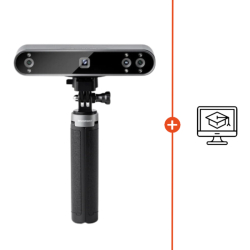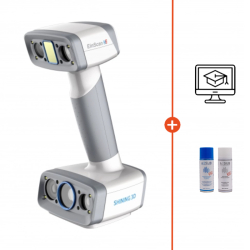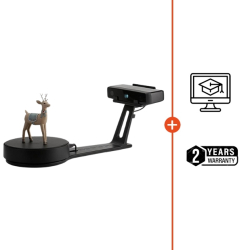- 👨🔧 Premium After-sale service
- 🚚 Free delivery from €39.90
- 📦 Return under 14 days
- ✉️ Customer service
Filament PVA / BVOH / Breakaway
Active filters
Filament PVA / BVOH / Breakaway
PVA or BVOH filaments are very specific 3d filaments. They are used on dual extrusion printers as building materials for support structures.
Soluble in water (PVA and BVOH) or easily detachable for the "breakaway" range, these support filaments offer the possibility ofgreatly improving the appearance of your models requiring the addition of support. The solubility of this material also makes it possible to remove these supports in areas that are difficult or impossible to access with a tool.
From a software point of view, printing this material creates a dense layer in direct contact with the area to be supported, resulting in a more precise and efficient deposition of the critical area.
As you would expect, this soluble support filament is very sensitive to moisture, so it needs to be protected with extra vigilance from ambient humidity. Storage solutions such as the Polybox or the Creality drying box are important if you want to maintain good manufacturing quality and avoid nozzle clogging. In the case of infrequent but exposed use, it will be necessary to dry your reel of PVA beforehand.
PVA (Polyvinyl Alcohol) is not harmful to the environment, and can be safely disposed of in your waste water system. We simply recommend that you let the hot water run for a few seconds to prevent blockages forming in the pipes.
Hot water will dissolve your PVA quickly, so this will also be the case during the post-treatment process in water. The length of time it takes for your PVA medium to dissolve will therefore already depend on the temperature of the water used.
The other important point linked to your water is its saturation level: the cleaner your water, the more effective it will be, whereas saturated water will lose its effectiveness. So plan to drain your dissolving tanks regularly.
What temperature should you use to dissolve your PVA?
The answer is not so 'simple' and actually depends on the material to be released from PVA. If you are printing a double extrusion of PLA and PVA, you will need to refer to the temperature limit of PLA. In this case, lukewarm water heated to 30-35°C will be sufficient.
If you can handle nylon or TPU, the temperature of your water may increase and accelerate shrinkage. We also recommend using an agitator in your water to improve the efficiency of the removal process. When immersed, the PVA will turn into a sort of jelly, and you can then remove it manually, always with the aim of reducing the total dissolving time.
Depending on the quantity and density to be dissolved, allow between 2h and 8h.
How do I choose my soluble support filament?
Once again, the choice of PVA depends on the material to be supported. The compatibility between your PVA/BVOH and your construction material is the point to watch.
For example, M-PVA Forshape is an improved PVA that dissolves more quickly than a standard PVA.
Generally speaking, PVA is compatible with PLA / TPU / NYLONS. Some versions are also compatible with PETG (e.g. M-PVA).
The use of styrenic materials such as ABS or ASA is more complex, in which case we recommend BVOH, a derivative with a different composition, offering better results.
Should I choose a soluble or non-soluble "Breakaway / PolySupport" filament?
This depends on your project and in particular your aesthetic needs. If your application needs to be aesthetically pleasing, you should opt for a soluble support. This avoids leaving marks on the printed part.
In the second case, for example for a functional prototype with complex geometries, using a Breakaway or PolySupport filament is more than sufficient.
The latter is less expensive than a PVA, for example, and has the advantage of being easier to remove than a standard PLA.
































